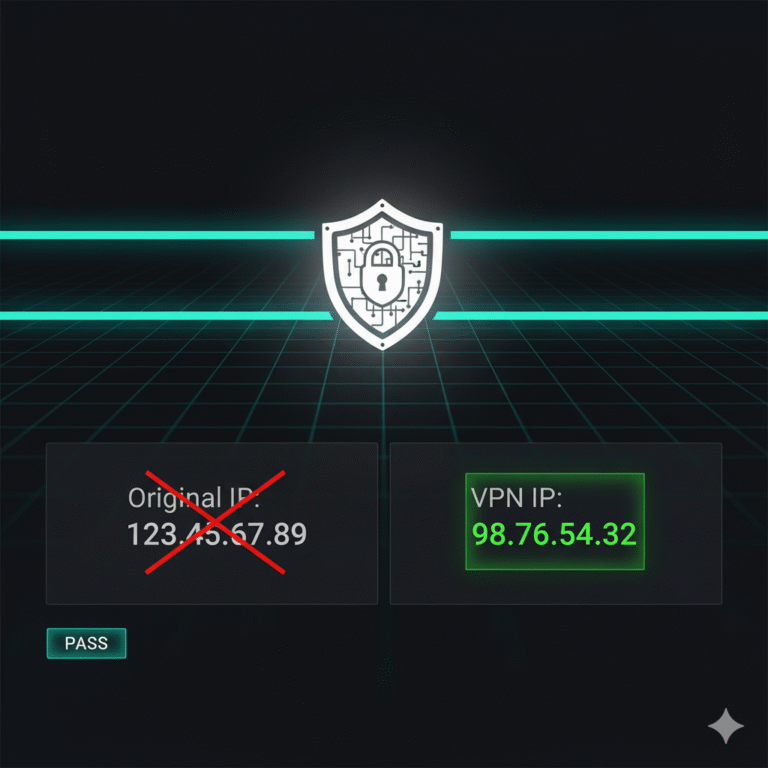Setting up a VPN is essential for IT managers, network engineers, and cybersecurity professionals who need secure, encrypted connections for remote access or network privacy. Understanding how to setup a VPN correctly ensures optimal security, network reliability, and compliance with organizational policies. This guide covers practical steps, technical considerations, and testing procedures for effective VPN deployment.
How to setup a VPN from scratch on any platform?
To setup a VPN from scratch, start by selecting a VPN protocol that matches your security and performance requirements. Popular protocols include OpenVPN, IKEv2/IPsec, and WireGuard (source: RFC 8484). Install the client software on your endpoint device or configure a VPN concentrator at the network perimeter. Ensure the authentication method is secure, using certificates, multi-factor authentication, or pre-shared keys depending on the environment. Finally, configure routing and firewall rules to allow the VPN traffic while restricting unauthorized access.
What are the hardware and network prerequisites when you setup a VPN?
Hardware requirements vary based on user load. A small team may only require a VPN-enabled router or a modest server, while enterprise deployments need high-capacity VPN concentrators with dedicated CPU cores for encryption. Network prerequisites include a stable ISP connection, proper DNS resolution, and static IP or dynamic DNS for server reachability. Monitoring bandwidth and latency ensures that the VPN does not become a bottleneck for critical applications.
How to configure the VPN client on Windows, macOS, Android, and iOS?
For Windows and macOS, VPN clients usually provide a setup wizard. Input server address, authentication credentials, and chosen protocol. Enable options like “auto-reconnect” and “kill switch” for added reliability. On mobile devices, VPN setup is integrated into system settings: add a VPN configuration, select the protocol, and input authentication details. Always verify that the device’s DNS and routing are handled by the VPN to avoid leaks (source: Cloudflare Learning).
How to setup a VPN on a router or network gateway for full-network coverage?
Configuring a VPN on a router enables all connected devices to benefit from encryption without individual client installations. Access the router firmware, navigate to VPN settings, and input server information, credentials, and protocol. Some modern routers support WireGuard or OpenVPN natively. Ensure proper routing and NAT rules, and test connectivity for devices behind the router. Enterprise-grade VPN concentrators like Cisco or Juniper offer centralized logging, multi-tunnel support, and redundancy for large deployments (source: VPN Concentrator Guide).
How to verify and test your VPN setup is working correctly and securely?
Testing your VPN involves multiple steps. First, confirm the device has received the VPN-assigned IP address. Use tools like ipconfig/ifconfig or online IP checkers. Second, verify that traffic is routed through the VPN using traceroute and DNS leak tests. Ensure all critical services are reachable while external monitoring shows the encrypted connection. Testing bandwidth and latency will highlight performance degradation. For enterprise setups, periodic audits using packet capture or SIEM integration confirm VPN traffic is encrypted and policy-compliant.
Constraints and performance:
When you setup a VPN, performance constraints are influenced by encryption overhead, server location, ISP bandwidth, and device processing power. Mobile networks may experience higher latency due to variable signal strength. Routers handling multiple VPN tunnels require robust CPUs; otherwise, throughput drops significantly. Some ISP or NAT configurations can block certain VPN protocols, necessitating fallback options like TCP-based OpenVPN. Always benchmark speed before deploying to production to ensure acceptable user experience.
What common issues arise when you setup a VPN and how do you troubleshoot them?
Frequent issues include authentication failures, DNS leaks, and routing conflicts. Authentication failures are often caused by mismatched credentials or expired certificates. DNS leaks occur if the system continues to query the default DNS instead of the VPN-assigned servers; enforce DNS settings via client configuration. Routing conflicts can prevent access to local network resources; resolve by defining proper split-tunneling rules. Firewall or NAT blocking requires protocol changes or port forwarding. Logging and monitoring tools are critical to quickly identify and mitigate problems.
Internal Link: For an in-depth performance comparison of top providers, see AirVPN vs NordVPN: Which VPN Offers Better Security & Speed?
Which security best practices should you follow when you setup a VPN?
Security is paramount when you setup a VPN. Always use strong encryption algorithms like AES-256 and modern key exchange protocols such as ECDH. Enable multi-factor authentication for remote users, and limit access based on role or IP addresses. Regularly rotate keys and certificates, and audit VPN logs for suspicious activities. Avoid default credentials on VPN servers, and patch client and server software promptly. These practices ensure that the VPN protects sensitive data against interception and unauthorized access (source: Kaspersky Blog).
How to maintain and scale a VPN deployment effectively?
Maintaining a VPN requires monitoring performance, logging events, and updating client software. Use centralized management tools for configuration updates and automated certificate renewal. For scaling, consider load-balancing multiple VPN servers and deploying geo-distributed endpoints to reduce latency. Network segmentation ensures that only authorized users access sensitive resources. Periodic penetration testing and compliance audits verify that the VPN continues to meet organizational security standards.
How to automate VPN setup for large teams or multiple devices?
Automation can reduce configuration errors and deployment time. Use configuration management tools like Ansible, Puppet, or PowerShell scripts to push VPN profiles and certificates to endpoints. For mobile devices, Mobile Device Management (MDM) solutions allow bulk configuration of VPN settings across iOS and Android devices. Automation also supports policy enforcement, monitoring, and rapid onboarding of new employees without manual intervention.
Are there alternatives or complementary technologies when you setup a VPN?
While VPNs provide strong encryption and secure tunneling, alternatives like Zero Trust Network Access (ZTNA) or SD-WAN can complement VPN deployments. DNS over HTTPS (DoH) and encrypted DNS services add an additional privacy layer. Some organizations combine VPNs with multi-factor authentication gateways to enhance security. Understanding the trade-offs of each technology ensures that VPN deployment aligns with broader cybersecurity strategies (source: TechRadar).
How to optimize performance without compromising security?
Optimizing VPN performance involves selecting the right protocol, server location, and MTU settings. WireGuard generally offers higher throughput compared to traditional OpenVPN or IPsec. Reduce unnecessary encryption overhead for internal traffic, use split-tunneling for non-sensitive applications, and ensure servers have sufficient CPU resources. Monitoring tools can track latency, packet loss, and bandwidth to adjust deployment dynamically.
Internal Link: For additional insights into VPN binding and secure torrenting, see how to bind qbittorrent to vpn for secure torrenting.
Conclusion
Understanding how to setup a VPN correctly is crucial for IT managers and cybersecurity professionals aiming to secure network traffic and enable reliable remote access. Following best practices, validating configuration, and continuously monitoring performance ensures that your VPN provides robust security without compromising efficiency.



